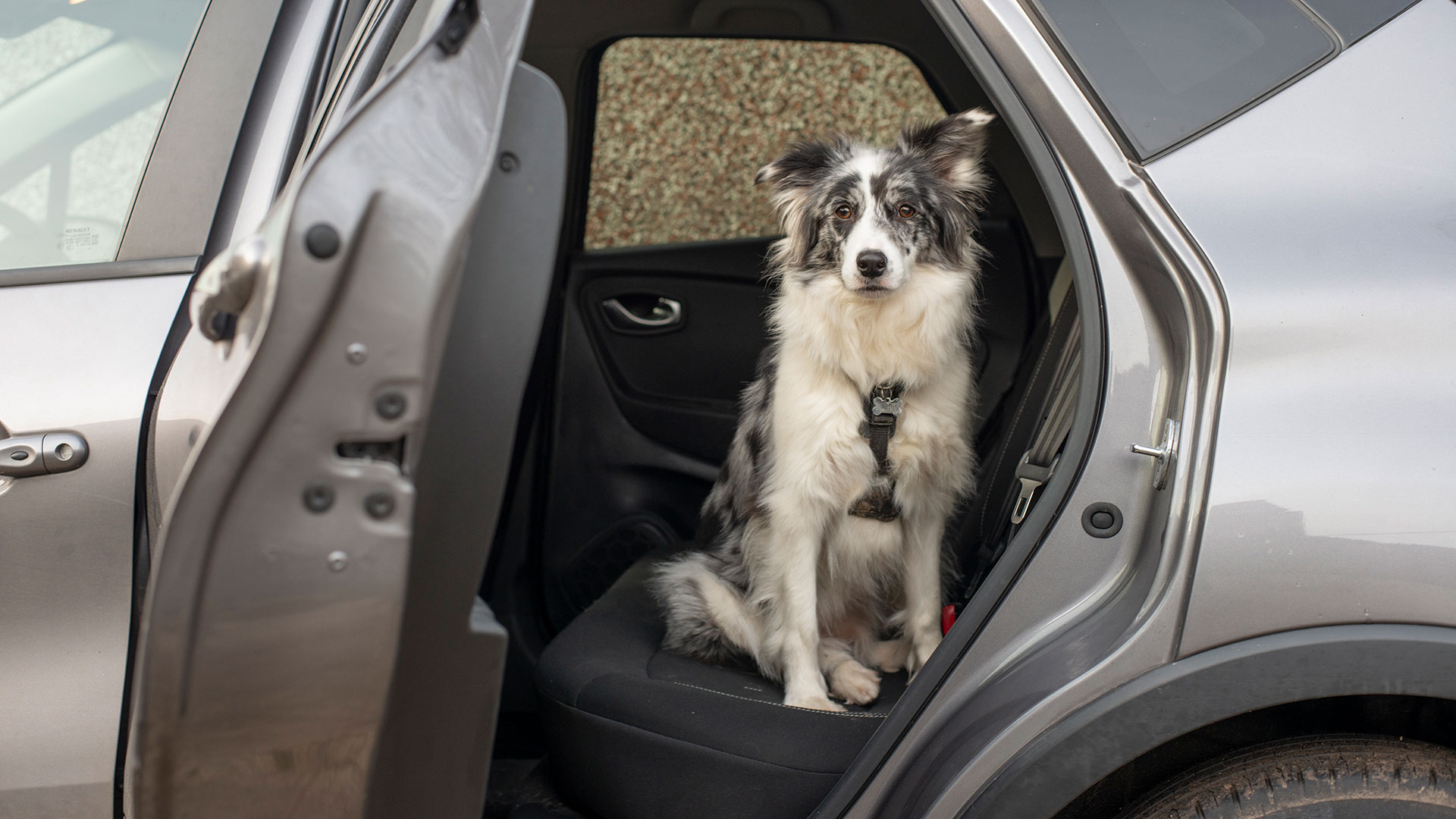My puppy would throw up during every car ride – this is how I trained her to enjoy the car
Not all puppies can adapt to riding in a car at first, but there are ways to help them adjust

When I was preparing to bring my eight-week-old border collie puppy Fenwick home for the first time, I was filled with an equal measure of excitement and nervousness. She was going to be the first dog that I could call my own and I couldn’t wait to try trick training, obedience work, and perhaps even a spot of agility. However, no matter how excited I was, I knew that Fenwick would probably feel very differently about being taken away from the only things she’d known in her short life.
I did everything I could to prepare for her journey – she had a blanket that her mother and siblings had slept with and some of the best puppy treats to reward her with. However, as I started the 90-minute journey back home from her breeder’s house, I soon encountered a problem that I hadn’t been expecting – Fenwick absolutely hated the car. And, as she settled into her new home with us over the next couple of months, she began to express this severe dislike through bouts of vomiting and diarrhea.
Looking back, the upset stomachs that Fenwick was experiencing were likely partly caused by her severe chicken allergy (which was only officially diagnosed when she was eight months old). However, the stress of being in the car was definitely a major contributing factor. In fact, Fenwick’s aversion to cars became so bad that my partner once had to ride in the back of my car in just his boxers after she threw up all over him.
This was the earliest training curveball that Fenwick threw at me (although certainly not the last!) and I initially felt overwhelmed at the idea of resolving it. There was no way to avoid car rides, as I lived on a busy main road with no large green spaces within walking distance for a young puppy. I knew that I had to resolve this issue, so I got to work on my first great training challenge.
Why don’t some puppies like car rides?
As frustrating as it was to be unable to take Fenwick to all the new places I wanted her to experience, I also felt terrible that Fenwick felt so uncomfortable – both physically and mentally. I asked APDT-certified dog trainer Lara Sorisi why some puppies can have such a strong aversion to being driven around.
“Unfortunately, some puppies may have never been in a car before going to their forever home. However, being in a car is a really big experience for them. I breed puppies and I make sure that they’re fully desensitized to the car by the time they’re old enough to leave me because I want to prevent them from developing car sickness or car anxiety.
“If you think about it, there’s a lot of potentially overwhelming elements in a car. They’ve got all the motion and momentum to deal with – let alone all of the new smells as well. If you add an entirely new place at the end of this new experience, then it’s no wonder that some puppies develop anxiety around the car.
PetsRadar Newsletter
Get the best advice, tips and top tech for your beloved Pets
“I like to introduce my puppies to cars slowly. First, I’ll practice putting the puppies in a stationary car and just letting them get used to the smells and textures of that environment. Then, I’ll turn on the car engine and give them a chew or a lick-mat to help them relax. Turning the radio on can also help as well. After that, I’ll start doing small journeys up and down the road, or popping to the shops to get some milk. This will help your puppy start to associate the car as a safe place, rather than something to make them nervous or upset.”
Aside from car rides causing anxiety, there can also be a physical reason too. This article from VCA Animal Hospitals explains that motion sickness in dogs is a common problem and is actually more common in younger dogs than adults. “The reason may be due to the fact that the parts of the inner ear involved in balance are not fully developed. Puppies will often ‘outgrow’ motion sickness by the time they are about 1 year old.”
However, even if your puppy is experiencing physical motion sickness, that doesn’t mean that you can’t counteract it with training. In fact, with dedicated training, Fenwick stopped being physically sick after just a month – well before she turned one.
How I trained my puppy to enjoy car rides
One of the most important things I’ve learned about puppy training is to take things at your puppy’s pace. It can be really difficult not to let yourself get frustrated when your puppy just won’t play ball – whether it’s toilet training, crate training or, as in my case, learning to tolerate car rides. It was clear that Fenwick wasn’t going to learn to like riding in the car through sheer repetition, so it was time to try a slower pace.
Here’s what I did…
1. I found a high-value treat
An ideal training position is being able to positively introduce a situation to your dog so that they never have a chance to build any negative associations. If your dog already dislikes something, then you’re already beginning a few meters behind the starting line. That’s why it’s so important to use a super motivating treat to help change their mind.
Ordinary kibble usually won’t cut it for something like this, so try using cubes of cheese, shredded chicken, cut-up hot dogs, or even steak (just make sure not to give your puppy too much, as it might end up upsetting their stomach).
2. I made the car super rewarding
No matter how much Fenwick disliked being inside a moving car, being sat in a stationary vehicle with her favorite toys, and being regularly fed cubes of cheese was a different matter altogether. I did this every day for a week to help her associate the car with being rewarded. I would also take her to the car for some of her proper meals as well.
Soon, being taken to the car was no longer a source of anxiety for Fenwick – she started to trot happily towards it, looking forward to the treats she was expecting to receive inside.
3. I took it slow (figuratively and literally)
Once Fenwick was used to associating the car with being rewarded, I began to take her on short outings. At first, I rewarded Fenwick as the car drove at under 10MPH for 30 seconds at a time. As she got more used to being in a moving car, I gradually increased the time she spent in it. I then started to take her somewhere fun and exciting, like the woodland she loves walking in or my parents’ house for some cuddles. This helped her begin to understand that the car took her to nice places.
After following this training regimen, it didn’t take long for Fenwick to quite happily tolerate the car. In fact, a few months ago, she was even the perfect model of behavior on a five-hour car journey after we hit major traffic. I would have never believed that she could be capable of this, but this just goes to show how incredible our dogs can be with the right training.
Looking for more ways to enrich your dog’s life? Find out what happened when I tried a 45-minute sniffari with my dog.
Louise Carey is a freelance writer and the Editor of sister website Top Ten Reviews. She has been working in publishing for seven years, contributing to publications including The Independent, TechRadar, Digital Camera World and more. As the proud pet parent of a reactive border collie with a food allergy, it’s been necessary for Louise to explore a variety of fun and exciting ways to enrich an energetic dog that can’t always go on walks. She’s passionate about sharing the information she’s learned to help other pet owners as well.

